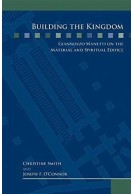Purloined Letters (Hardback)
The Twelfth-Century Reception of the Anglo-Saxon Illustrated Hexateuch (British Library, Cotton Claudius B. IV)
Pages: 416
ISBN: 9780866984430
Published: 30th June 2011
Casemate UK Academic
(click here for international delivery rates)
Need a currency converter? Check XE.com for live rates
The famous Old English Hexateuch in the British Library (Cotton Claudius B. iv) of the second quarter of the eleventh century, containing the Old English prose translations of Genesis-Joshua, has been well-known since the seventeenth century and has been much studied because of its important texts and unique series of more than 400 colored illustrations. In spite of this, one of its most conspicuous features, an extensive set of Latin and English annotations added throughout the manuscript in the late twelfth century, has been virtually ignored, or “hidden in plain sight.” Among them are more than 30 annotations in English, which are conventionally explained as “mid-twelfth century” copies of notes composed in Old English at an earlier date. Purloined Letters documents the fascinating discovery that these English notes are in fact the “last Old English,” coeval with the date of the handwriting (post 1180) and part of the larger scheme of the more than 300 Latin notes, which consist of numerous extracts from the “Genesis” and “Exodus” sections of the very recently written Historia Scholastica of Peter Comestor and of extracts from a near-contemporary compilation of works by or attributed to St. Jerome. The manuscript is known to have been in the library of St. Augustine’s Abbey, Canterbury in the late fifteenth-century and Purloined Letters endeavors to show that it was probably written there, and that certainly the annotations were. The work of the annotations is typical intelligent Benedictine compilation of “literal biblical commentary,” responding accurately and intelligibly to the preexisting Old English text. The work is probably by an identifiable monk of St. Augustine’s, a certain “Normannus” (fl. 1172-1200), who no doubt displays a desire to preserve, complete, and update a valuable ancient book of the house, while revealing a tension between the old monastic style of scholarship and that of the twelfth century Paris schools and other “modern” sources from which the material is drawn. At the same time this annotator attempts to conceal, by changes and disguises of script styles and false and missing attributions, the actual sources and time of writing of these annotations, in order, the authors argue, to give an artfully enhanced impression of the antiquity and depth of learning of his house, probably intended to deceive. Purloined Letters includes a semi-diplomatic edition and translation of the annotations and six other chapters, on the history of the study of the annotations, on the English of the annotations, on the scripts, on the use of the Historia Scholastica in the annotations, on the use of “Jerome,” and on the background and motivation that led to the compiling of the notes in this particular book. This book is intended for all scholars and graduate students of Old English and Anglo-Norman studies. It will also be of interest to art historians, and to specialists in the Historia Scholastica, medieval bible studies, and the history of scripts and forgery.














